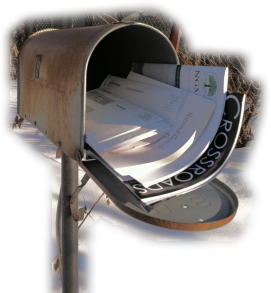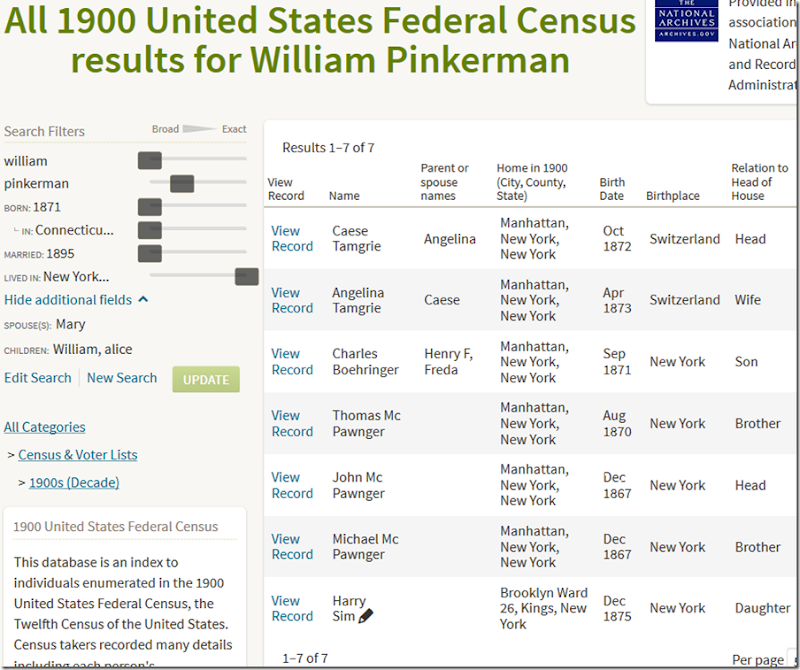It is important that we understand the records we find online. Consider an example. Suppose we are trying to find the birth and death dates of Eleanor Kendall, daughter of Isaac and Eleanor from early Ashford, Connecticut. We search Ancestry.com and find the database record below. We snip the image, slap a URL on it, and we’re done. Right?

Source: http://search.ancestry.com/cgi-bin/sse.dll?indiv=try&db=CTvitalsBarbour&h=559520
Illustration 1 – Snippet from Ancestry.com with Anemic Citation1
Not so fast. We need to understand this record. We need to evaluate how trustworthy it is. We remember that we are using an online database. That means Ancestry extracted (sometimes called indexed) information from a previous source.
Extracting information into databases introduces errors. Databases are not full abstracts (copies of all relevant information in records). Extractors, or indexers as they are often called, may misread or misinterpret information. They may be unfamiliar with the language, naming customs, or handwriting. They may lose their place and skip or duplicate information. And when extracting information into a database, indexers are constrained by the fields and data types; information that doesn’t fit may be adapted or discarded. Database publishers further manipulate the information to maximize the database’s searchability; names, dates, and locations are standardized to values the software program can understand.
Not content to grab and go, we examine the information surrounding a record:

Illustration 2 – Record from Ancestry.com2
We see Ancestry has provided a helpful citation stating where Elenor’s information came from: a series of 55 books edited by Lorraine Cook White titled The Barbour Collection of Connecticut Town Vital Records.
We scroll down and read the database description. There we read that this database is an index to the Lucius Barnes Barbour Collection.
The Lucius Barnes Barbour Collection, well known to the Connecticut researcher, serves as an index to and an abstract of most pre-1850 Connecticut vital records. …Barbour’s project was to abstract and collect all town vital records up to about 1850. There are two formats to the material. The first is a statewide paper slip alphabetical index containing a complete abstract of each vital record taken from the books in each town. …The second format is the group of separately bound volumes of abstracts of vital records for most towns, prepared from the slips.3
From this description we note the number of times this information has been recopied: it was abstracted, it was copied from slips into bound volumes, and it was extracted into a database. (As we shall see tomorrow, this is a simplified view of the number of times this information was copied.) Each of these steps introduces the possibility of errors.
We note there is an image attached to Elenor’s record. We look at the image:

Illustration 3 – From The Barbour Collection4
We see here that the information about Elenor came from vol. A, p. 2. And we see that Ancestry’s indexers actually did make an error. As you may have already guessed, Eleanor did not die before she was born. She died the 2nd of April following 5 April 1827, or in other words, 2 April 1828. We see the source of Ancestry’s error; there is a note that the year might be 1727, not 1827.
We want to examine the original source and come to our own conclusion: Did Eleanor die in April 1828 or April 1728? We set out to find vol. A, p. 2 of White’s source. The preface of a book of compiled information often tells how to use the book, explains abbreviations, and explains sources. We want to see what and where “vol. A” is. We use the Ancestry filmstrip view and find that, unfortunately, Ancestry excluded these important pages.
We check the FamilySearch Catalog for Ashford, Windham, Connecticut, and find it has “Records of births, marriages, and deaths, 1675-1849,” microfilm 1,376,249 item 1. The volume was created by the town clerk and was there when FamilySearch/GSU filmed it. We (if you’re me) walk down the street to the Salt Lake City Family History Library and look at the film. Sorry; I shouldn’t rub it in. We order the film, pay the rental fee, wait a long time, drive over to the FamilySearch family history center, and take a look at it.
We find the title board does not identify the volume and there is no photograph of the spine or cover. The handwriting is fairly modern, all written about the same time, has one vital record per line, and has surnames grouped together. We find the record of Elenor on page 4, not page 2.

Illustration 4 – Vital Record Book of the Town of Ashford5
We suspect this is not the earliest record of Elenor’s birth, but, gosh, it says some interesting things. This copy says that Elener’s birth and death both occurred in 1727 and the death was in August, not April.
Still in pursuit of the original source, we head back to the FamilySearch Catalog and find “Proprietor records 1705-1770,” microfilm 3,676, created by the town clerk and filmed in the town. The catalog entry notes that, as proprietor records often do, this record contains records of births (from 1670 to 1737). We walk down the street again—I mean, we order the film, pay the rental fee, wait a long time, drive over to the family history center, hope for the best, and take a look at the film. Here is what we find on the 2nd page:

Illustration 5 – Proprietor’s Record of Ashford6
Elenor ye Daughter of Isaac Kendall by Elener his Wife Was Bor[obscured by paper repair]
5th Day of April 1727 --- & Sd Eliner Kendall Deceasd the 2d
of August Next following ----------------------------------------------
We seem to have finally found our original. The year is clearly 1727 and the death month is clearly August. Feeling accomplished and satisfied, we are ready to call it a night when we realize we haven’t taken time to really understand this record. We investigate the first page of the volume and find this:

Illustration 6 – Preface to Ashford Proprietor’s Record7
The following is a Coppy of What
is Called the old Paper Book and all
the old Record that I found Belonging
theirunto Without ye Alteration of one
Word. tho not in Just the Same form
…
This Book Was Transcribed in the Months
of Febry March & April Anno Domini
1770 By Ebenr Byles Town Clerk
and attested at ye End ---------------
Oops. I guess we didn’t quite reach the original source.
Feeling less accomplished and not at all satisfied, we call it a night.
Sources
1. “Connecticut Town Birth Records, pre-1870 (Barbour Collection),” database, Ancestry (http://ancestry.com : accessed 25 June 2016), search “Elenor Kendall” (do not specify date); citing Lorraine Cook, ed. The Barbour Collection of Connecticut Town Vital Records, 55 vols. (Baltimore, Maryland: Genealogical Publishing Co., 1994-2002).
2. ibid.
3. “Connecticut Town Birth Records, pre-1870 (Barbour Collection),” database page, Ancestry (http://search.ancestry.com/search/db.aspx?dbid=1034 : accessed 2 July 2016); citing Alice Eichholz, “Connecticut”, Ancestry's Red Book, ed. Alice Eichholz (Provo, Utah: Ancestry, 2004).
4. Detail from Lorraine Cook White, comp., The Barbour Collection of Connecticut Town Vital Records: Andover 1848-1879, Ashford 1710-1851, Avon 1830-1851, [vol. 1] (Baltimore, Maryland: Genealogical Publishing Co., 1994), 137; digital image, “Connecticut Town Birth Records, pre-1870 (Barbour Collection)” (http://ancestry.com : accessed 25 June 2016), Ashford Vital Records 1710-1851 > image 121 of 253.
5. Detail from Ashford, Connecticut, Vital Records, 1675-1849, p. 4, ; Town Clerk’s Office, Ashford; FHL microfilm 1,376,249, item 1.
6. Detail from Ashford, Connecticut, Proprietors Records, 1705-1770, 2; Town Clerk’s Office, Ashford; FHL microfilm 3,676.
7. Detail from Ashford, Connecticut, Proprietors Records, 1705-1770, preface; Town Clerk’s Office, Ashford; FHL microfilm 3,676.
Note: Credit for identification of an erroneous record in the Barbour Collection is due Marilyn Labbe, “Corrections and Additions to the Vital Records of Ashford, Connecticut and Brooklyn, Connecticut,” Connecticut Nutmegger (December 1998) 31:375; images, American Ancestors (http://www.americanancestors.org : accessed 3 July 2016).
 “It’s the stories that we remember,” Paul Milner said. Paul delivered the Thursday keynote at the 2016 BYU Conference on Family History and Genealogy. Paul is a native of England and a noted expert on British Isles research. He has authored six books on English and Scottish research.
“It’s the stories that we remember,” Paul Milner said. Paul delivered the Thursday keynote at the 2016 BYU Conference on Family History and Genealogy. Paul is a native of England and a noted expert on British Isles research. He has authored six books on English and Scottish research.  The Thiepval Memorial names 72,000 men of the British Empire who died in the Battle of Somme whose remains were never identified.
The Thiepval Memorial names 72,000 men of the British Empire who died in the Battle of Somme whose remains were never identified.




 Wednesday’s keynote speaker is FamilySearch president and CEO, Stephen Rockwood. He is the managing director of the Family History Department of
Wednesday’s keynote speaker is FamilySearch president and CEO, Stephen Rockwood. He is the managing director of the Family History Department of 


 Dear Insider,
Dear Insider, 


 The scheduled outage and system upgrade of FamilySearch on 27 June 2016 seems to have gone smoothly. The upgrade is an attempt to prevent performance problems. The upgrade provides “a new technology that should provide better scaling with traffic,”
The scheduled outage and system upgrade of FamilySearch on 27 June 2016 seems to have gone smoothly. The upgrade is an attempt to prevent performance problems. The upgrade provides “a new technology that should provide better scaling with traffic,” 












